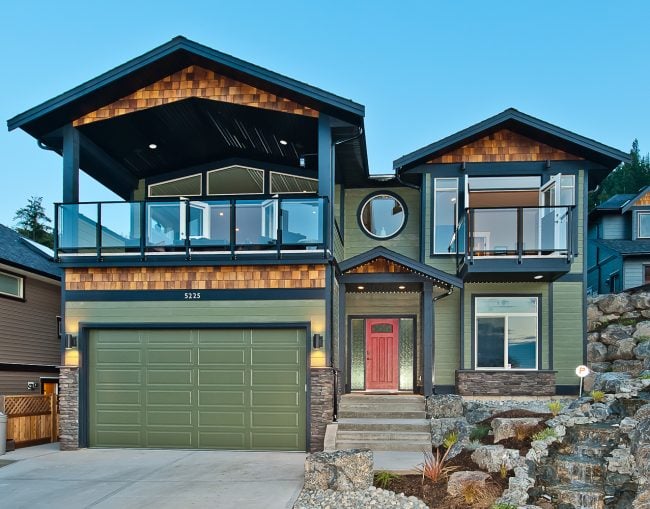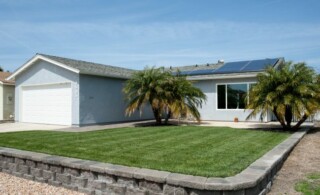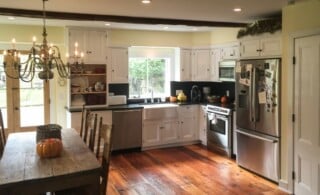
If you’re interested in green renovations but are worried you can’t talk the talk, then it’s time you got your PhG (the study of green philosophies). Here’s a list of 5 of the most important terms commonly thrown around by green renovation experts, what they mean, and what you stand to gain by incorporating them in your next home improvement.
- Daylighting—Daylighting is really just a fancy term for lighting your home the old fashioned way: with the sun. That might sound like a simplistic approach to green renovation for some homeowners, but when you consider U.S. Department of Energy estimates that 15 percent of the energy in your home is used to power artificial lighting, suddenly installing a few more windows and skylights sounds like a pretty good idea. Proven daylighting strategies include painting walls and ceilings in lighter colors, as well as installing south- and north-facing windows and skylights (east- and west-facing windows collect too much heat during summer), light tubes, light shelves and clerestory windows.
- Passive Solar Heating—Green renovation experts have a knack for making simple ideas sound complicated. Case in point: just as “daylighting” refers to using natural light to illuminate your home, “passive solar heating” is the green term for harnessing the abundant, and efficient, heating power of the sun. Since home heating can account for as much as 38 percent of the home energy costs in an average home, making the most of this abundant, and free, natural resource is well worth your time. South-facing windows and skylights with high solar heat gain coefficients are a must, and you’ll get even better results if the sunlight shines on a masonry, brick, or concrete floor (all of these materials soak up heat from direct sunlight and then radiate it back into your home long after the sun is gone). Trombe walls, tube walls (consisting of water-filled tubes), and a solarium are a few other ways to make the most of passive solar heating in your home.
- Whole House Systems Approach—A whole house systems approach is the holy grail of the green renovation industry. Why? According to the EERE, a whole house systems approach recognizes that “the features of one component in the house can greatly affect other components, which ultimately affects the overall energy efficiency of the house.” In layman’s terms, the most energy-efficient home is one that’s green through and through, from how you design your foundation right on up to the type of roofing material you choose. If you have the luxury of designing your home from scratch, taking a whole house systems approach means maximum energy savings, making it a good choice for your pocketbook and the environment.
- Advanced Framing Techniques—Few homeowners put any thought into how their contractor framed their home, addition, or remodel. That’s probably because up until recently there wasn’t much reason to. But what if somebody told you that by adopting green framing strategies you could slash costs for labor, materials and waste disposal in one fowl swoop? According to the EERE, advanced framing techniques (also referred to as Optimum Value Engineering, or OVE) “create a structurally sound home with lower material and labor costs than a conventionally framed house.” In short, OVE uses lumber more efficiently, creates less waste that has to be disposed of, and in the end saves you money over more conventional framing techniques—all without compromising the safety or integrity of your project.
- Salvage and Reclamation
The National Association of Home Builders estimates that as much as 90 percent of the construction waste sent to landfills every year is recyclable, a fact that has spawned an entire industry specializing in reclaimed and recycled building materials. Even green renovations are going to create a good amount of by-products. Salvage and reclamation are essentially the construction industry’s version of reduce, reuse, and recycle. But the net effect is a lot sexier that sorting different grades of plastic into bins. Reclaimed lumber, for example, offers some of the most stunning textures for wood flooring and custom furniture. Salvage companies have elegantly aged products from old, torn-down buildings. Imagine having one-of-a-kind bathroom fixtures from the nineteenth century. It works in the other direction as well. Before you begin a kitchen remodel or other major renovations, ask your contractor if he or she will make every effort to salvage as much building material as possible.
You don’t need an actual degree to have a solid understanding of green renovation practices and the philosophies behind them. There is rarely one truth or silver bullet about green construction and renovation. A comprehensive, flexible, and responsible attitude will allow you to seek out greener renovation methods without unduly tying your renovating hands.
 Environmental Home Remodeling: Recycling and Composting
Environmental Home Remodeling: Recycling and Composting  Going Green: Major Renovations with Multiple Rooms
Going Green: Major Renovations with Multiple Rooms  How Can I Remodel for a Vintage-Style Kitchen?
How Can I Remodel for a Vintage-Style Kitchen?  3 Bathroom Remodels You Can Afford RIGHT NOW
3 Bathroom Remodels You Can Afford RIGHT NOW  Think Home Safety with Your Basement Remodel
Think Home Safety with Your Basement Remodel 

Are You Familiar With This Topic? Share Your Experience.